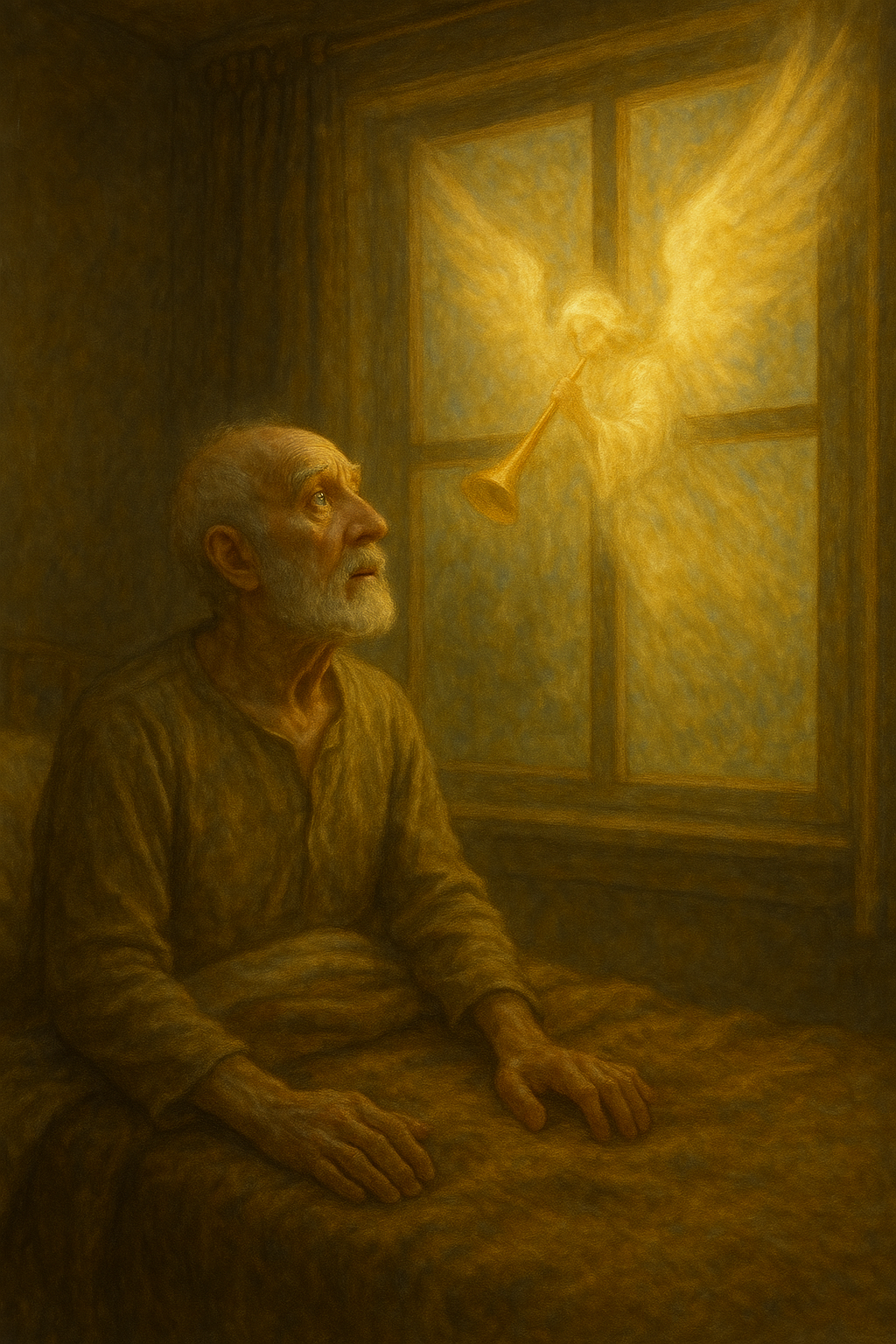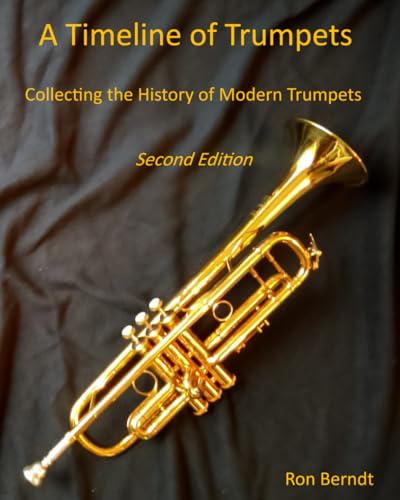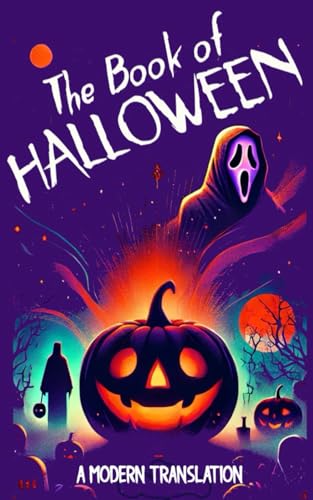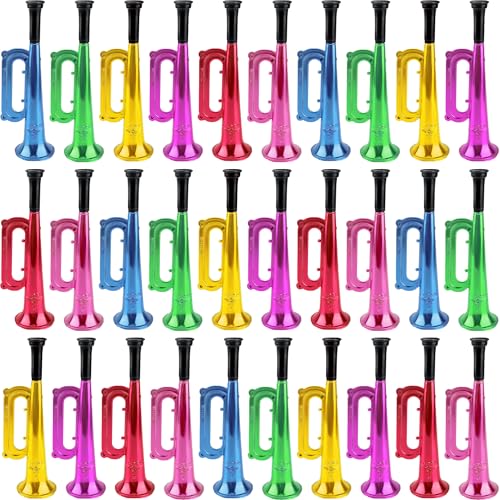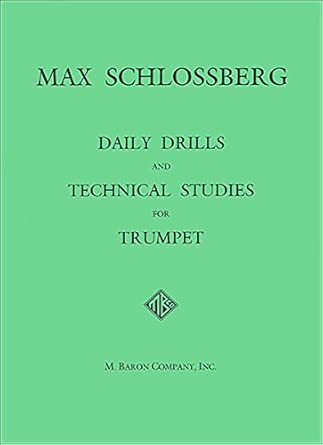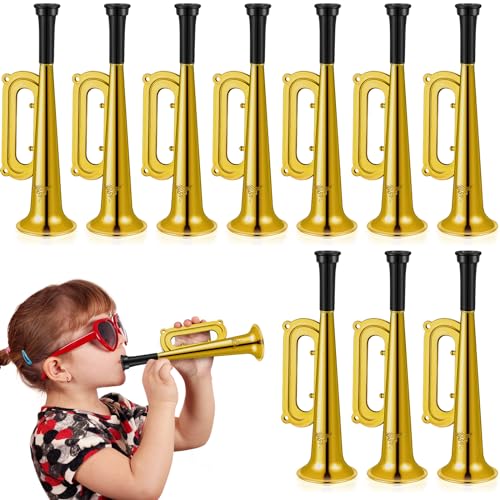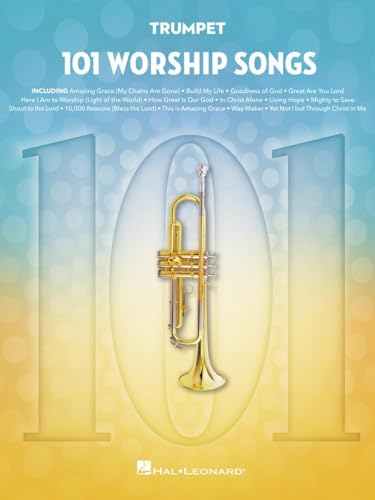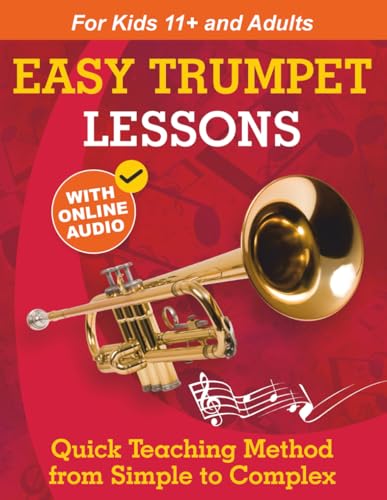The Myth of the Trumpet and the Soul It Calls
🕊️ The Myth of the Trumpet and the Soul It Calls 🕊️
A tale told in whispers at the edge of dreams…
In the Time Before Time, when the stars were still being sung into place,
there was a hill that touched both earth and heaven.
Upon this hill stood a lone tree (silver of bark, golden of leaf)
and in its hollow heart lay a sleeping trumpet,
curled like a creature waiting to breathe.
This was not a trumpet of war, nor a trumpet of music.
It was the Trumpet of Remembering …
for it held a sound that only the soul could hear,
and only when it was time to awaken.
The trumpet was forged not by hand, but by longing …
a breath from the Maker,
a sigh from the earth,
and a single tear from the moon.
Legends say that each soul, before entering the world,
stood before the Trumpet on the silver hill.
And the Trumpet whispered into them …
not in words,
but in a deep, trembling sound,
a note that carried the memory of where they came from
and who they truly were.
And so they were born …
carrying that forgotten note inside them like a seed.
But the world is thick with forgetfulness.
Noise, hunger, pain, pride ….
these wrap around the soul
like veils of fog.
Many live their lives never hearing the Trumpet again.
But some … a few …
in the stillness of twilight,
in the ache of a prayer,
in the hush before a storm …
hear it.
A single note,
not loud, but endless.
A calling.
There is a tale of one such soul. A wanderer named Elior.
He was a weaver of nets in a village by the sea,
but inside him burned a hunger he could not name.
One night, as the stars shimmered like watchful eyes,
he climbed a hill that no map held,
drawn by a sound only his bones remembered.
At the top he found the ancient tree, silver and gold,
and in its hollow … the Trumpet.
No hand had touched it in ages.
But as Elior approached,
it sang.
It did not need breath or lips.
It simply was.
And its voice struck through him like light through dark water.
In that moment, Elior remembered.
Not just who he was, but whose he was.
He saw his story in the stars .
not the small tale of net and fish,
but the vast myth of soul and flame.
He wept.
Then he laughed.
And then he vanished.
Some say he became the wind.
Others say he went to prepare a place for others
who would one day hear the same call.
But all agree on this:
Since that night,
whenever someone is about to remember who they are,
a wind stirs the trees,
a hush falls on the hills,
and far away, though no one sees it …
the Trumpet sings.
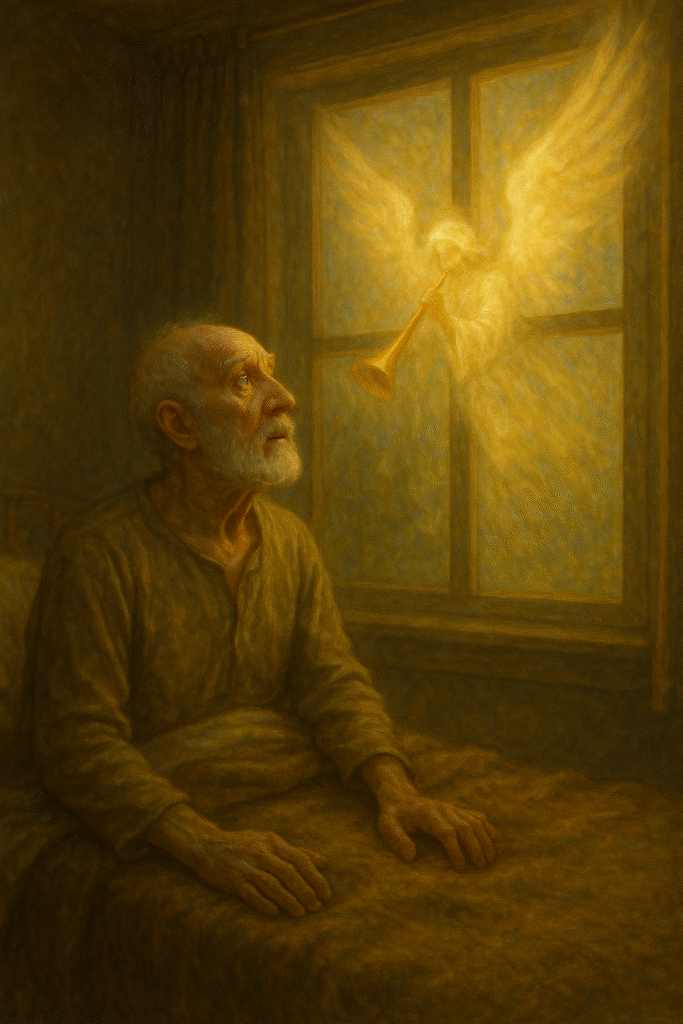
The Origins of the Trumpet
The trumpet is one of the oldest known musical instruments, with a rich history that spans several millennia. Its origins can be traced back to ancient civilizations, where it played a pivotal role in various cultural contexts. The earliest trumpets were crafted from materials such as animal horns, conch shells, and later, metals like bronze and silver. Archaeological findings highlight that these early instruments were not merely for musical expression but were often employed for practical purposes including military signaling, communication, and ceremonial functions.
In ancient Egypt, for instance, trumpets made from bronze were used in military ceremonies and religious rituals, signaling important events and orchestrating troop movements. Similarly, in the civilizations of Mesopotamia, instruments resembling trumpets have been unearthed, often associated with royal courts where they were used to announce the presence of dignitaries or during communal gatherings. These early iterations of the trumpet were characterized by their straight, simple designs and limited range, which evolved in complexity over time.
The evolution of the trumpet continued through the ages, with various civilizations adding their unique adaptations. The Roman Empire, for instance, refined trumpet design, incorporating a curved shape that enhanced both sound projection and tonal quality. During the Medieval period, the trumpet found its home in courts across Europe, transitioning from a military tool to an instrument of celebration and entertainment. Significant treasures, such as the gold trumpets found in the community of La Tene in Switzerland, serve as testaments to the instrument’s esteemed place in ancient society.
Overall, the historical significance of the trumpet is evident through its diverse applications, from signaling in warfare to playing majestic melodies in royal courts. The archaeological artifacts recovered from various regions underscore the trumpet’s enduring legacy as it transformed across different cultures and periods, providing insight into the social and ceremonial fabric of ancient civilizations.
The Symbolism of the Trumpet in Mythology
The trumpet has long been imbued with rich symbolism across various mythologies and cultural narratives. In ancient Greek and Roman traditions, trumpets often represented the voice of the gods or heralds. The connection is evident in many stories where these instruments were used to announce significant events, such as victories in battle or divine messages. The image of Hermes, the messenger god, is frequently depicted with a trumpet, symbolizing the importance of communication and the transition between realms.
Further exploring the realm of mythology, we find that in Christian tradition, the trumpet holds profound significance. It is frequently associated with themes of resurrection and divine judgment. The Book of Revelation vividly illustrates the role of trumpets as instruments that herald critical moments of divine intervention. These messages convey the call to awaken the faithful, illustrating the trumpet as a powerful symbol of hope, transformation, and accountability.
The cultural interpretations of the trumpet extend beyond Western traditions. In various indigenous cultures around the world, trumpets serve as instruments that connect the earthly realm with the spiritual. For instance, in African folklore, trumpets are utilized in rituals to summon ancestral spirits, affirming their role as mediators between the living and the dead. The sound of a trumpet evokes a sense of urgency and reverence, reinforcing its status as a messenger of significant change.
Across art and literature, the trumpet often embodies the dual nature of announcements: both joyous and foreboding. Its presence in visual arts typically conveys dynamism and action, while in narrative forms, it punctuates pivotal moments. Hence, the trumpet emerges not merely as a musical instrument but as a multifaceted symbol in mythology, reflecting humanity’s hopes, fears, and the ever-present dialogue between the terrestrial and the divine.
The Trumpet in Historical Events
The trumpet has held a pivotal role throughout history, serving as a crucial tool in various significant events. This brass instrument has been a vital means of communication on battlefields, where clarity and immediacy were essential. Military leaders utilized the trumpet to convey orders across the chaos of war, ensuring troops received commands swiftly and efficiently. The distinctive sound of the trumpet could travel over long distances, making it an ideal instrument for signaling maneuvers, rallies, and retreats, thereby playing a significant role in the outcomes of various conflicts.
Beyond the battlefield, the trumpet has also held ceremonial importance in state functions and public celebrations. Its commanding presence often heralds the arrival of leaders, marking moments of national pride and unity. For instance, during royal ceremonies or official proclamations, the trumpet signals the significance of the occasion, evoking feelings of respect and anticipation among the audience. Historical events, such as the signing of important treaties or the coronation of monarchs, have often been accompanied by the powerful sound of the trumpet, solidifying its status as an emblem of authority and tradition.
Notable historical figures have also made their mark with the trumpet. Composers like Johann Sebastian Bach and Louis Armstrong have enriched the cultural landscape through their musical contributions, demonstrating how the instrument transcends mere function to become a medium of artistic expression. Their works often reflected the sentiments of their times, further emphasizing how the trumpet has been intertwined with human experiences throughout history.
In summary, the trumpet has significantly impacted not just music, but also the very fabric of historical events. Its ability to communicate and enhance ceremonial moments illustrates its enduring legacy as a powerful symbol in both military and cultural contexts.
Modern Interpretations and Cultural Legacy
The trumpet has evolved significantly over the centuries, transcending its origins to become a versatile instrument embedded in various musical genres. In contemporary music, it is prominently featured in classical orchestras, jazz ensembles, and modern pop bands. Each genre utilizes the trumpet in distinct ways, showcasing its adaptability and enduring appeal. For instance, in jazz, the trumpet serves as a lead instrument, often improvising melodic solos that capture the spirit of the music and engage the listeners. Renowned jazz musicians like Miles Davis and Louis Armstrong have elevated the trumpet’s status, shaping its interpretation and cultural importance.
In addition to jazz, the trumpet has found a place in contemporary pop music. Artists across genres incorporate the instrument to add depth and richness to their compositions. From the brassy accents in funk to the soaring melodies in ballads, the trumpet’s presence enhances the overall sound, proving its relevance in modern music. This integration into popular culture both reflects and influences current musical trends, ensuring the trumpet remains a vital component of the musical landscape.
Moreover, today’s composers and performers are reimagining the trumpet’s role, experimenting with new techniques and styles to push artistic boundaries. The emergence of electronic music has led to innovative collaborations, where the trumpet interacts with digital sounds, creating a fusion of traditional and modern elements. This evolution signifies not only a shift in musical expression but also an engagement with wider audiences who appreciate the trumpet’s unique voice.
The cultural legacy of the trumpet is underscored by its symbolism, often associated with power, celebration, and resilience. Its presence in various cultural rituals and performances emphasizes its role in human connection and communication. As new generations continue to embrace the trumpet, its significance in fostering creativity and expression remains ever relevant. The instrument endures as a bridge between history and modern interpretations, celebrating its rich heritage while inspiring future innovation.

